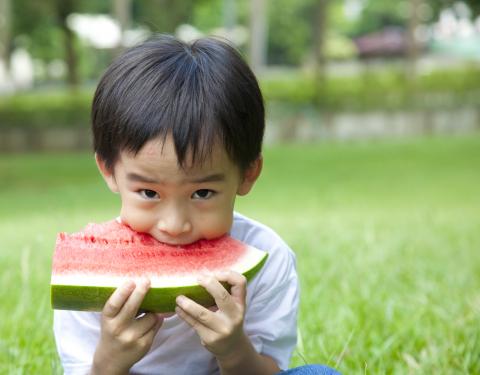
MomsRising has seen a lot of success in recent years making sure greater access is provided to hungry students in need of free and reduced-priced meals during school hours and guaranteeing that school lunches and breakfasts are healthier.
But what happens when school isn’t in session? What happens June through August?
Despite the advancements we have made during the school year, the Summer Nutrition Program, created to feed low-income children during the summer months, only reaches a fraction of eligible children. Over 21 million children participated in the free or reduced priced school meal program in 2013. Only 3.5 million of those children receive meals during the summer months. This is a HUGE problem!
The goal of the Summer Food Program is to meet the needs of hungry children in the summer by providing them with nutritious meals and snacks when other resources are not available. But this is impossible if kids can’t access the meals due to lack of knowledge, distance, lack of transportation or if no program exists in their area.
Luckily a bi-partisan group in Congress is working to fix this problem: Senator Kirsten Gillibrand (a Democrat from New York) and Senator Lisa Murkowski (a Republican from Alaska) in the Senate, and Representative Don Young (a Republican from Alaksa) in the House of Representatives have introduced legislation that would ensure that more low-income children have access to healthy food throughout the summer.
The Summer Meals Act includes four key areas to help hungry kids:
- Better Integration of Summer Education and Meals Programs
The current definition for Summer Meals Program requires that 50 percent of the children in the area be eligible for free or reduced-price school meals. This bars many educational summer programs from participating in the summer meals program. For example, 21st Century Community Learning Centers, which provides academic enrichment programs that help students meet state and local student standards in core academic subjects, such as reading and math has a 40% threshold level. The Summer Meals Act would update the area eligibility from 50% to 40% so that communities with significant numbers of low-income, hungry children would be able to receive meals and continue learning throughout the summer.
- Reduce Red Tape for Public-Private Partnerships
Many public agencies and private nonprofit organizations that operate summer programs also provide high quality afterschool programming and afterschool nutrition during the school year. The issue has been fixed for schools, which can provide summer meals through the National School Lunch Program, however other non-school entities are required to operate multiple child nutrition programs, which means they have separate applications and different programmatic rules. The Summer Meals Act will reduce the red tape by allowing public and private organizations to do one application so that they can provide children meals after school, on weekends, and during school holidays.
- Improve Nutrition in Rural, Underserved, Hard to Reach Areas
Transportation is one of the biggest barriers to Summer Nutrition participation due to the distances that children must travel to get to a site. Getting children to the summer meal sites that offer high quality educational and enrichment activities is a vital way to support access in underserved areas. This USDA program will provide transportation for underserved areas and promote innovative and creative ways to increase access to summer meals.
- Eliminate the Need to Skip a Meal for Children of Hardworking Parents
Many children participate in evening enrichment programs during the school year and summer months when their parents are working. The Summer Meals Act will provide the option of serving two meals and a snack or three meals so that children can continue learning throughout the afternoon.
MomsRising has endorsed the Summer Meals Act because we think it takes a positive step forward in ensuring that more hungry children have access to healthy meals throughout the year.
To find a summer feeding program in your community go here: http://www.whyhunger.org/findfood.
Are you concerned with how your child will eat during the summer months? Has your child benefited from a summer feeding program? If so, MomsRising would love to hear from you. Please share your experience here: https://www.momsrising.org/member_stories/topic/share-your-experience-on-summer-feeding-programs-for-your-children/



The views and opinions expressed in this post are those of the author(s) and do not necessarily reflect those of MomsRising.org.
MomsRising.org strongly encourages our readers to post comments in response to blog posts. We value diversity of opinions and perspectives. Our goals for this space are to be educational, thought-provoking, and respectful. So we actively moderate comments and we reserve the right to edit or remove comments that undermine these goals. Thanks!